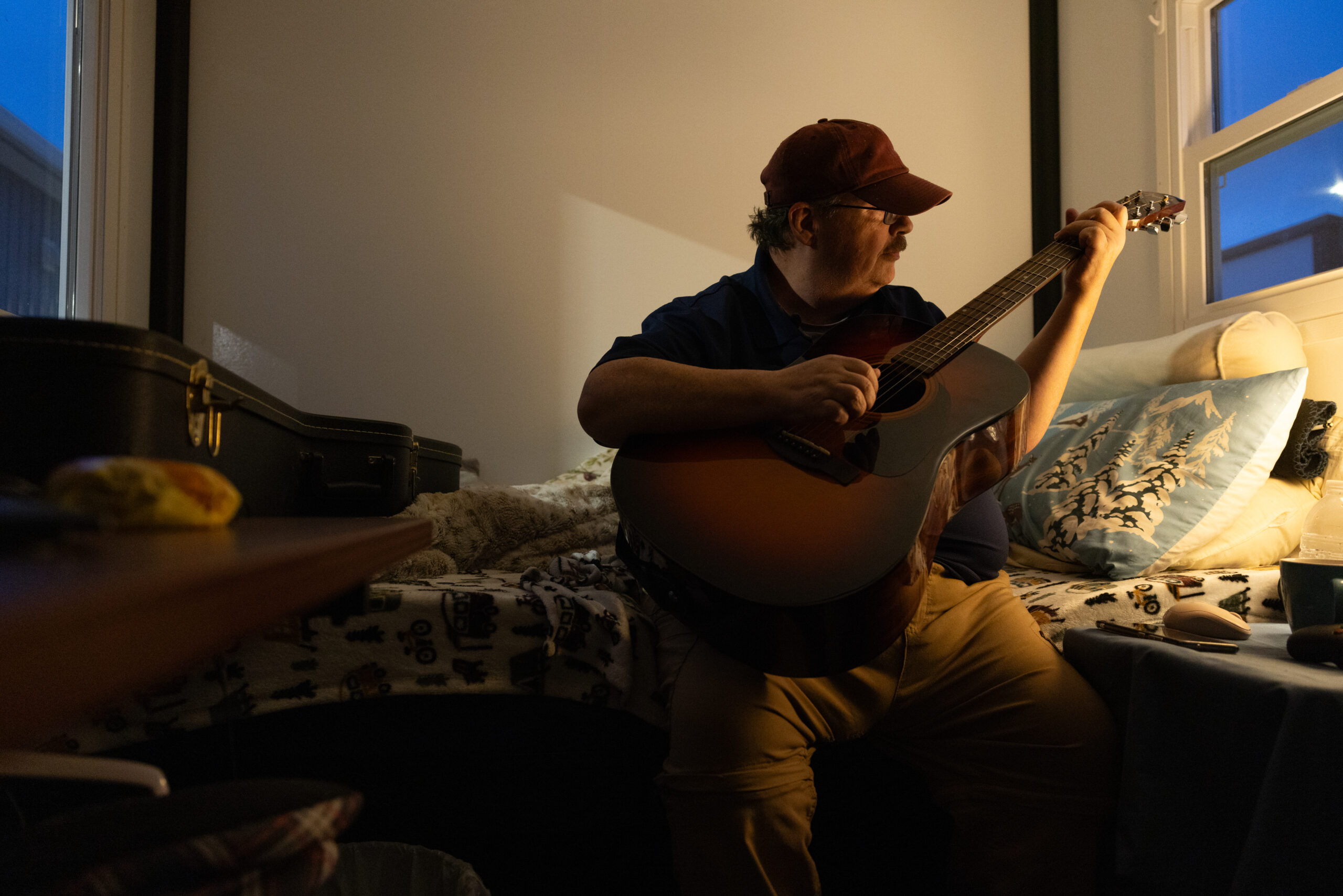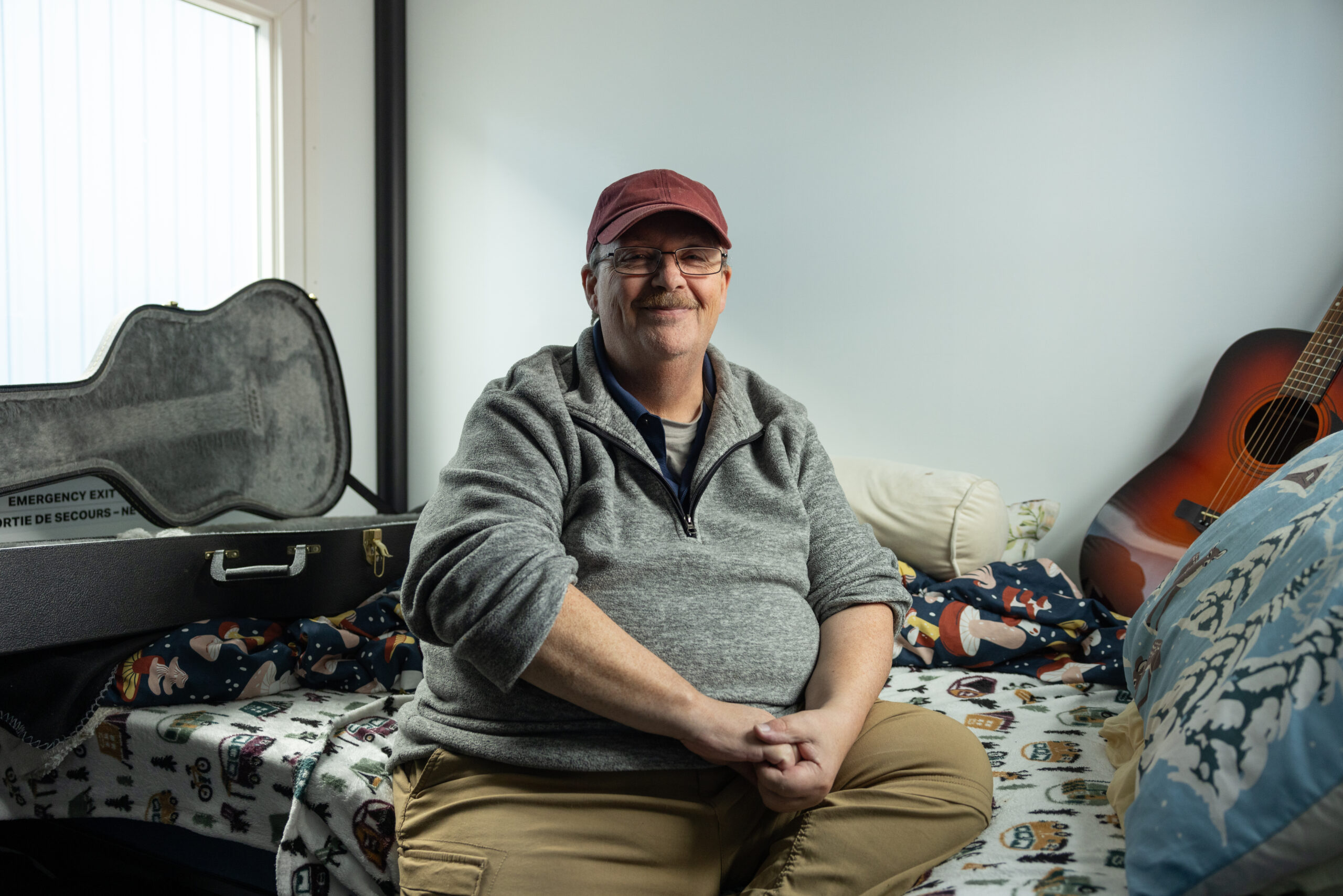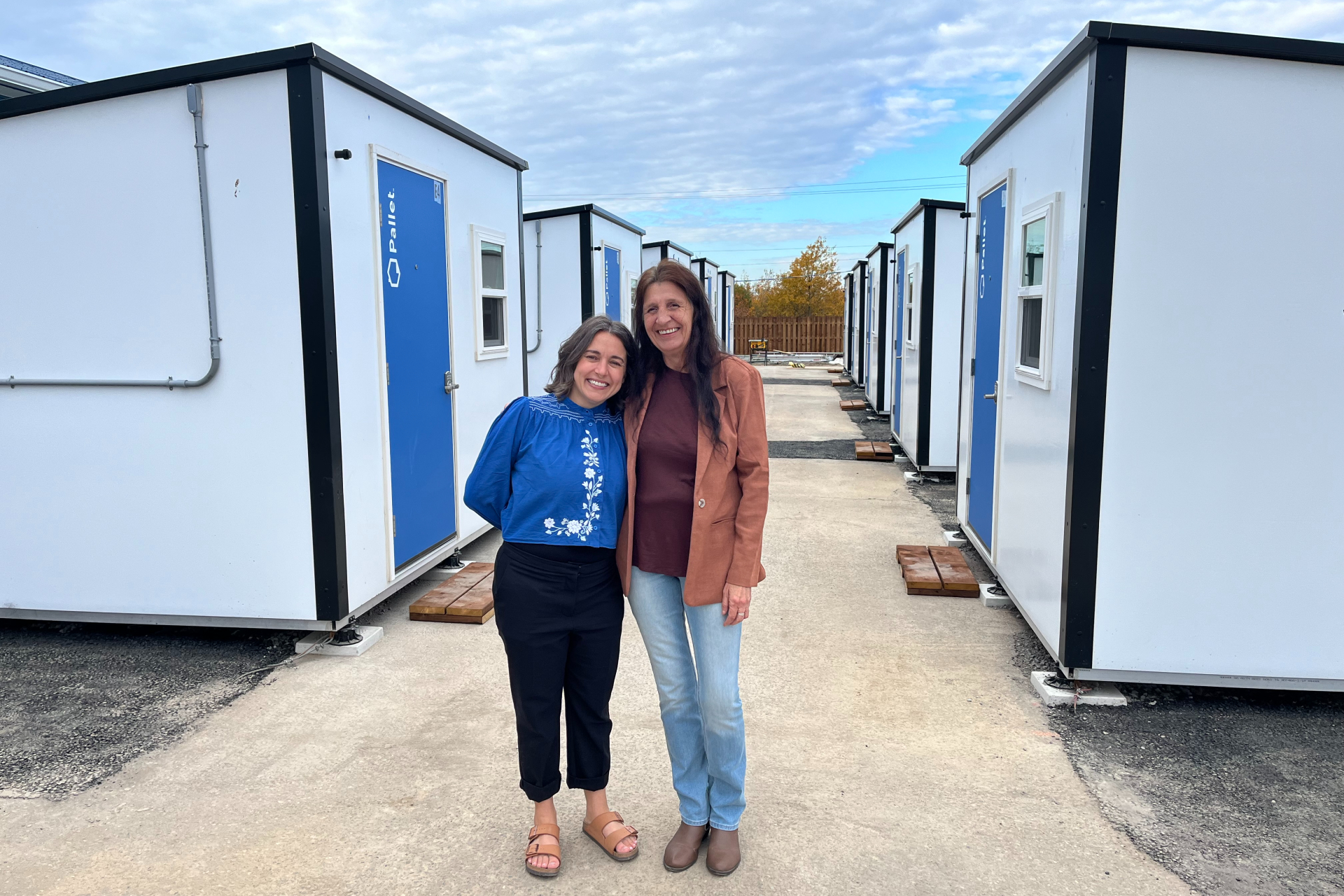July 22, 2025 · Posted by Ardelle Reynolds
Toronto looks to The Village at Pine Tree Park for lessons in emergency supportive housing
Almost 43% of Village occupants have secured permanent housing
Almost 43% of Village occupants have secured permanent housing

Charles Jackson was living in his car for four months before The Village at Pine Tree Park opened in the fall of 2024. He moved in shortly after, just before the cold winter weather set in.
“It was an emergency at that point,” Charles reflected from the comfort of his Pallet shelter a few months later. It was a cozy space where he could play his favourite video games and his acoustic guitar.
Today, Charles lives in his own apartment. He’s one of the 39 people who have left The Village for stable, permanent housing of their own.
“We all need a place to call home. It makes you feel human,” Charles said.

In the nine month The Village has been in operation, it has provided temporary, emergency shelter for 91 people, ranging from age 19 to 79, who were experiencing homelessness. There are 35 single-occupancy shelters at The Village, along with a communal building where residents have access to shower and laundry facilities, recreational activities, case management, daily meals from New Dawn Meals on Wheels, and 24/7 staff support. The average stay at The Village is 98 days.
“Meeting people where they’re at means helping them find stability, a roof over their head, a door that locks,” said New Dawn President & CEO, Erika Shea.
When people’s basic needs are met, that’s when Christine Porter, the Ally Centre’s Executive Director, sees a transformation happen.
“When you see people struggle to stay warm, to be fed — when you don’t have to do that anymore, you can concentrate on other things,” she said.

Ranging from full-time to part-time employment, peer support work, and educational development, 19 individuals have gained valuable work force skills throughout their time at The Village. When Annie Herney moved to The Village after years of couch-surfing and staying at homeless shelters, she finally found she had time to write again and began making a plan to go back to school.
Annie now lives at Eleanor’s Court in Sydney. 24 people have transitioned from The Village to Eleanor’s Court supportive harm-reduction housing, which opened in the spring and is also owned and operated as a collaboration between New Dawn and the Ally Centre, with 24/7 staffing and a range of on-site supports and services.
Unlike The Village, Eleanor’s Court is made up of apartments, each with a bathroom, kitchenette, bedroom, and living area. The apartments are furnished and residents have made them their own with personalized decor, photographs, and plants. Some people share their space with a pet. For many, it’s the first place they’re been able to call home in a long time.
Another difference between The Village and Eleanor’s Court is that residents at the latter pay rent, which is calculated based on each individual’s income. The units at Eleanor’s Court are deeply affordable.

Ally Centre staff recently presented to The City of Toronto’s Economic and Community Development Committee, sharing the positive impacts The Village at Pine Tree Park and Eleanor’s Court have had on individuals and the community. After hearing from the Ally Centre, along with other organizations focused on harm reduction and housing vulnerable people, the committee voted to explore the feasibility of locating villages of “micro-shelters” on underutilized TTC parking lots across the city. As demonstrated at The Village, it’s a model that allows communities to act quickly to provide emergency shelter — and the safety, stability, and dignity that comes along with that — for its citizens who are, in many cases, living on the streets.
According to Pallet, the company that makes the emergency shelters located at The Village and hundreds of other sites across North America, ten people, on average, move from a Pallet village to permanent housing every day.
“This tells us that in a broad sense, the pairing of dignified shelter with wraparound services like food and water, hygiene facilities, healthcare, counseling, and employment placement programs are effective in equipping residents with the tools necessary to transition to more permanent solutions,” the company says on its website.
To Erika Shea, addressing CBRM’s housing crisis with the emergency and long-term options provided by The Village and Eleanor’s Court “is a declaration to the world that the CBRM is a compassionate place.”
“By provided beautiful, dignified, affordable supportive housing to those in our community who are struggling the most, we are a stronger, more loving, and safer community for it.”
